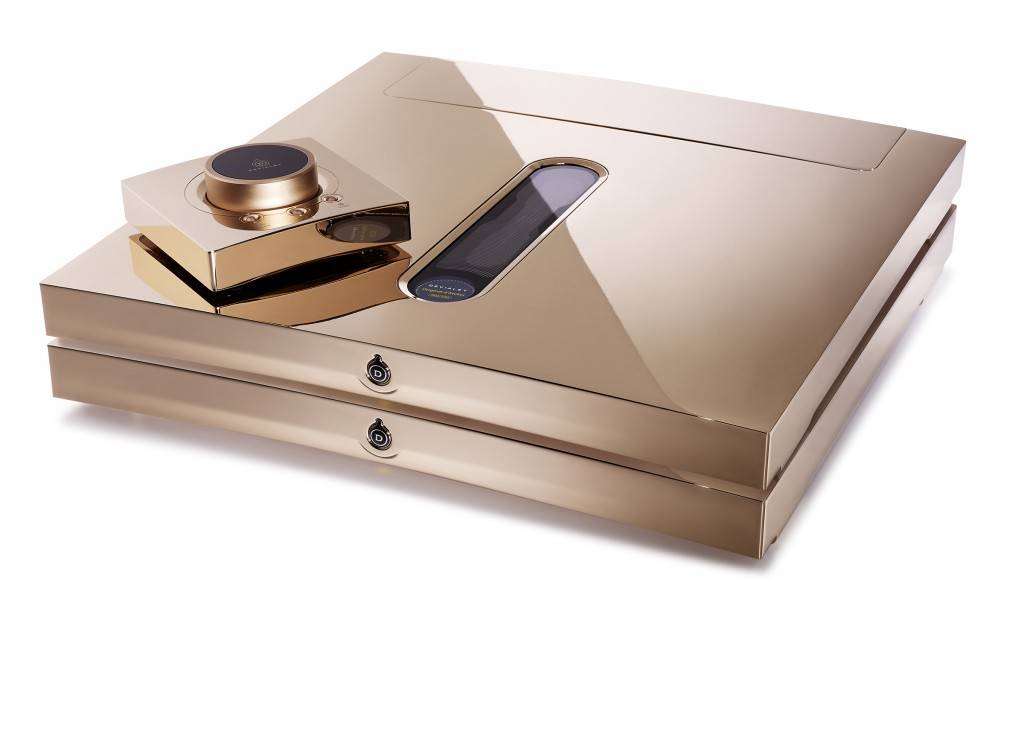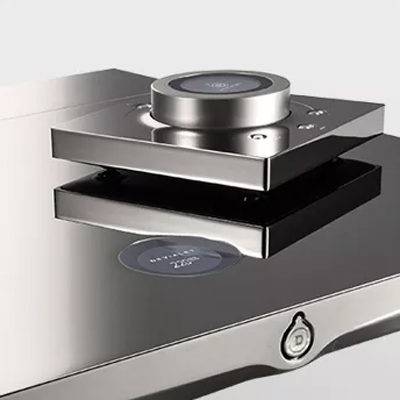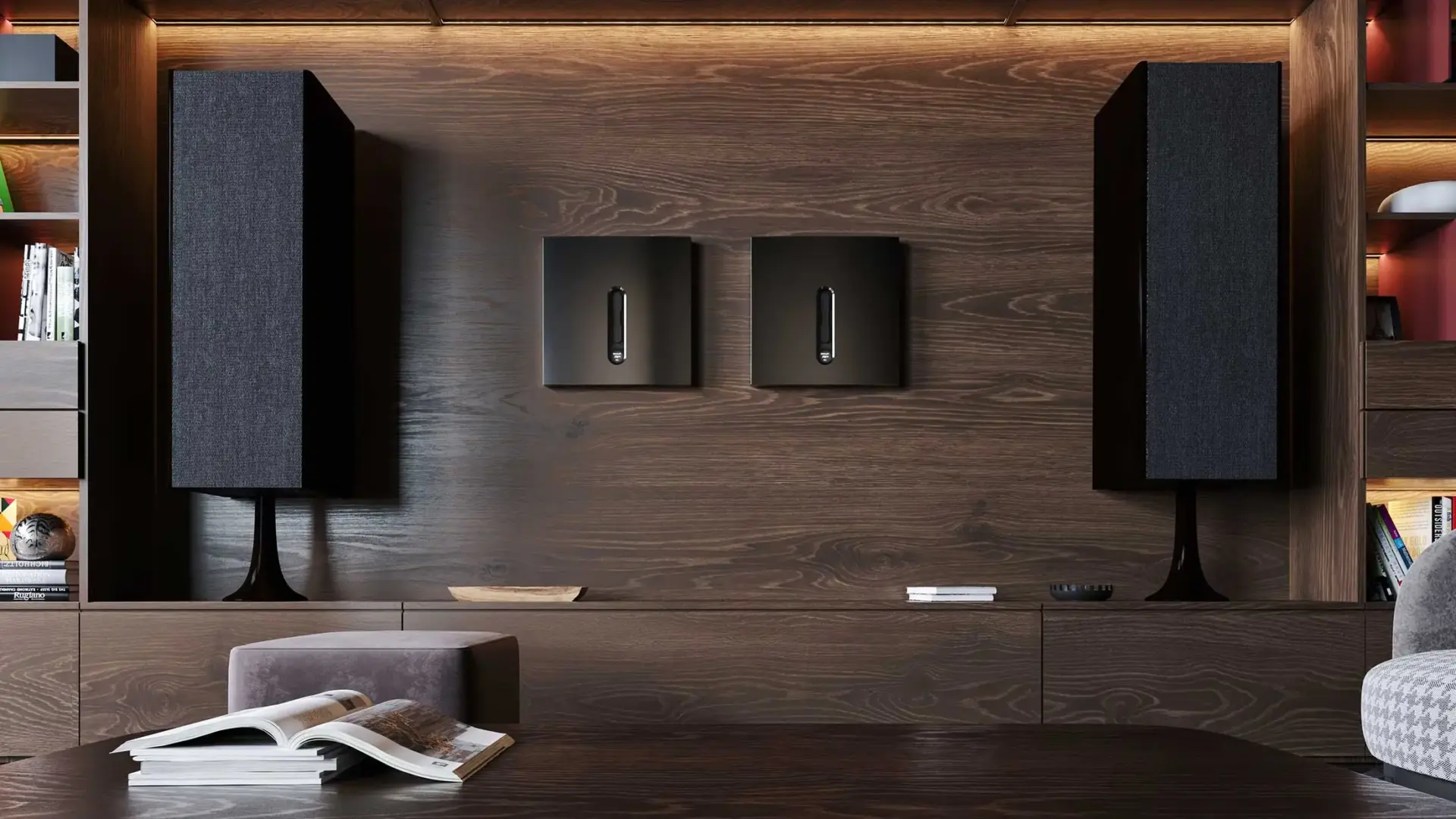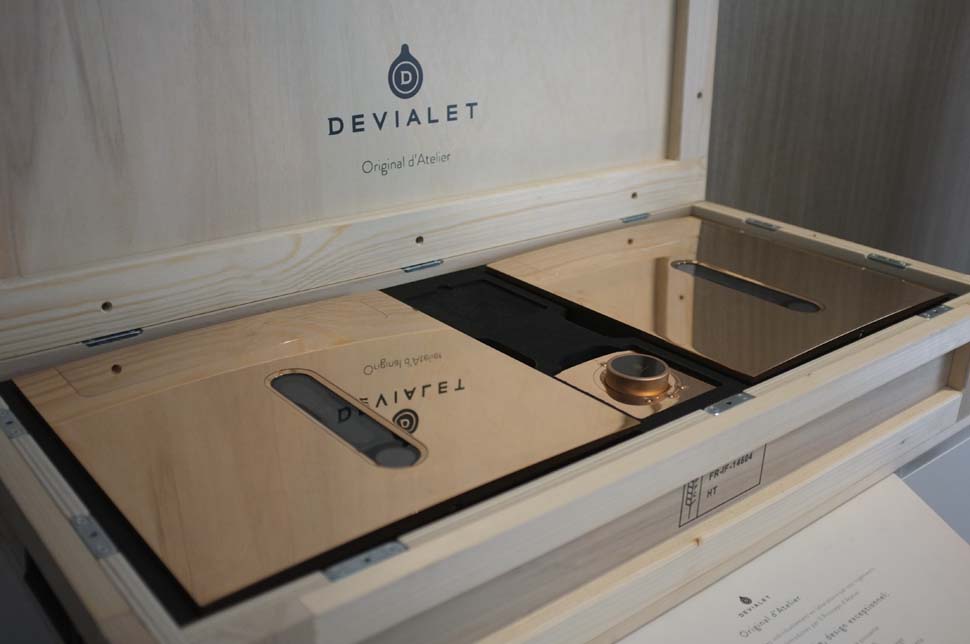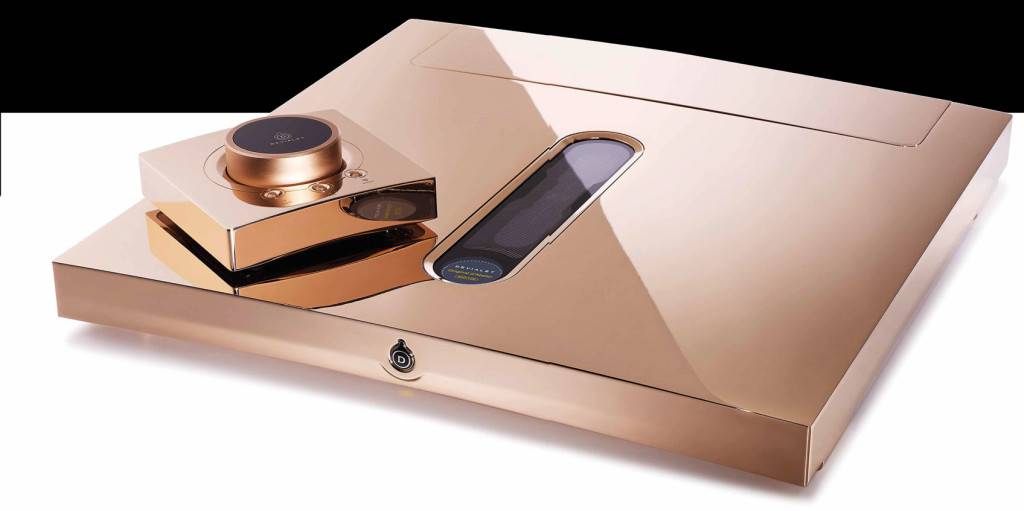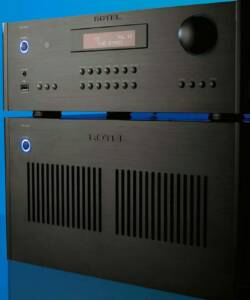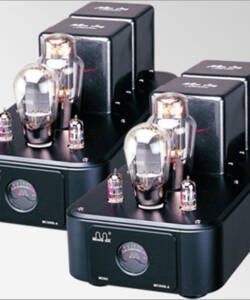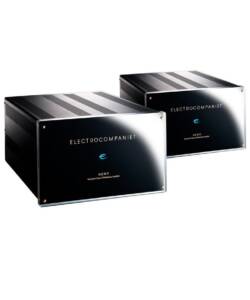Devialet Expert Pro 1000 (Original d’Atelier) Rose Gold
Original price was: R700,000.00.R260,000.00Current price is: R260,000.00.
The best album of all time? A case could be made for Radiohead’s Kid A or The Cure’s Disintegration. Start to end, they’re flawless; and arguably each band’s finest piece of work (to date). Therefore, you know it’s going to be a good great day when it begins with the needle dropping on Kid A‘s “Everything in its Right Place” and ends with Disintegration’s title track.
Furthermore, when you live in Australia you get used to seeing cool gear launched Stateside or in the UK and then having to wait a good few months before it lands down under. So it’s great, albeit unusual, to see France’s Devialet elect Melbourne’s Carlton Audio Visual as the launchpad for its new top-of-the-range model: L’Original d’Atelier. Translation: ‘workshop original’.
Between Radiohead and The Cure I sat down with Devialet’s Pacific region manager Yann Wachten for the full scoop ahead of the evening’s launch party. Wachten is Franco-German but speaks impeccable English.
My opening question was a simple “Why Australia?”.
Wachten explains that despite this country’s 24m strong population being small compared to that of the USA or Europe, Australia is a tech savvy country where consumers have a healthy amount of disposable income. Case in point: Australia has more Apple stores per capita than the USA.
No doubt the TOTL launch exclusive is also down to Devialet recently appointing a new Australian distributor: Interdyn, who also handle Pro-Ject, Rotel and OPPO.
Wachten provides a little background on his employer’s inception before getting into the specifics of L’Original d’Atelier.
Devialet was founded in 2007 by three monsieurs: Formerly head of R&D at Nortel, Pierre-Emmanuel Carmel is the brains behind the company’s Class A/D hybrid amplification (ADH) technology and despite his work on ADH pre-dating Devialet’s germination by a full four years, he chose to divide the financial rewards equally, three ways, among his fellow founders. Fraternité plus Egalité! Devialet’s killer industrial design comes from Emmanuel Nardin (a member of the watchmaker family of the same name) and it’s his cousin, Quentin Sannié, who steers business strategy.
L’Original d’Atelier is here to celebrate 5 years of Devialet’s Expert series. A quick recap: each Expert unit is a super-stylish all-in-one-device that takes care of network streaming, D/A conversion, pre/amplification. Just add loudspeakers. And perhaps a turntable. All Expert models feature in-built phono staging.

To accommodate Devialet’s loudspeaker-correcting SAM DSP and volume attenuation the intestines are an all digital affair. Digital inputs remain digital and all analogue inputs are converted to 24bit/192kHz PCM upon arrival. If that offends your analogue-or-die sensibilities, consider the possibility that you’ll gain far more from Devialet’s speaker-correcting SAM DSP than ever you’d (theoretically) lose through the two-step dance of ADC and DAC.
Conversely, Devialet’s amplification isn’t (strictly) digital. ADH = Analogue Digital Hybrid. Acting as a voltage amplifier and serving up the first 1.5 watts of power, a Class A output stage handles the music portion of the loudspeaker output signal. Providing more robust drive to the loudspeaker is the parallel-running Class D section. This all takes place in the 10cm path between D/A converter and binding posts. Devialet’s show demo party trick is to remove the Class D module and watch the music play on.
Everything Expert is made in France across three different factories. The first fabricates the extruded aluminium casework, the second is charged with polishing the aluminium and the third handles boards manufacturer and assembly.
The Expert range comprises four models: Le 120 and Le 200 are single units whilst Le 400 and Le 800 are dual mono packages.
Bringing the Expert model count up to five for a limited time is the rose gold finished L’Original d’Atelier, essentially a souped up Expert 800. On the inside, an updated Class D board and enhanced Class A section put more power on tap – 900wpc – whilst the pure copper base plate and a doubling of the internals’ “Gap pad” blue gum improve heat dissipation.
Know that L’Original D’Atelier won’t be around for long. Devialet intend to manufacturer a mere 100 pieces for which international allocation has the potential to strain distributor relations in some parts of the world. Once they’re gone they’re gone for good.
At 29,900 Euros the price will command only the deepest of pockets but the resolution and control brought by the prototype (called “Princeps d’Atelier”) to a pair of Sonus Faber Amati Futura in Carlton Audio Visual’s third demo space was nothing short of astonishing. Wachten agrees that listeners accustomed to the pleasures of even order harmonic distortion might need some time to acclimatise to the Expert’s immaculate and speckless vibe. Watch him explain the ins and outs of L’Original d’atelier in this 15 minute video:
Devialet’s polished aluminium finish serves as a rear-view mirror through which we observe almost every other hifi manufacturer on the planet. Even if your budget doesn’t stretch to L’Original d’Atelier (OD!) levels, Devialet’s commitment to a unified device that handles everything but air movement, short/er signal paths and next-level configuration quite literally reflects the multi-box approach to system design as positively old school and – in many cases – out of touch.
With the Expert series Devialet ignite a conversation that’s long overdue: that form matters just as much as function. Hardware then for Kid A and Disintegration fans who don’t want a rackful of gear and its attendant kabelsalat. Super-stylish solutions that sound every bit as good as they look. Consider this commentator très-keen to take on review time with Le 200.
UPDATE March 2016: my Expert 200 review for 6moons can be read here.
Further information: Devialet | Interdyn | Carlton Audio Visual
Devialet Expert 1000 Pro two-box integrated amplifier

A company like Devialet seemingly churns through products at a fair lick. Since the launch of the D-Premier, there have been several different products launched, upgraded, uprated, and enhanced. And that’s before we include the newer Phantom line. Add in changes in distribution, prestige stores, exotic advertising campaigns, and lots of venture capital driving the whole brand, and it’s little wonder there is some confusion.
Let’s backtrack and explain. The original D-Premier eventually became the Expert 250, and still remains (albeit with completely redesigned ’Pro’ internals) in the catalogue to this day. When the D-Premier became an Expert, it was joined by two other models; namely the Expert 130 Pro and the 220 Pro. The 220 Pro and 250 Pro can upgraded with their own matching Companion models, and there are two twin-chassis only designs: the Expert 440 Pro, and the Expert 1000 Pro tested here. Users of older D-Premiers or Experts used to have an upgrade program, where their product was given completely reworked internals, but that upgrade path expired earlier this year.
Between these launches, there was a short-lived but very significant special edition of the D-Premier – The Original d’Atelier. The significance of this product was that it incorporated many of the design developments that now go into the latest iterations of the main Devialet amplifiers, and in particular what lives inside the Expert 1000 Pro.

Internally, the differences between the Expert 1000 Pro and the older models are significant. The new amps deploy what Devialet calls ADH Intelligence in its patented Class A/Class D Hybrid amplifier design. This is effectively a redrawing of the amplifier circuit, effectively uprating the precision of the ADH core control architecture by a factor of four. This makes the ADH feedback loop faster, improves the resolving power of the Class A amplifier from eight to 10 bits, and this results in lower overall THD. Both the Class A and Class D amplifiers have been completely redesigned, with the Class A amplifier now a greatly simplified circuit, and the Class D amp pulled straight from that of the Original d’Atelier, with extensive beefing up. It’s effectively added 50% more power to the previous models, and includes more filter inductors per channel. The analogue to digital conversion stage (Magic Wire in Devialet-speak) is new, too, knocking 6dB off the THD and cutting the noise floor by 2.5dB. Add in a power supply that can now deliver 4kW and a very sophisticated (and large) thermal management system, which includes a 2.5kg copper base plate, and it all becomes clear that this is not simply old wine in new bottles.
The Expert 1000 Pro arrives in two Devialet boxes. The amplifiers are functionally identical, except you are missing one controller. The inherently digital nature of the Devialet design means the two can be conjoined with a single cable.
As before, the Expert 1000 Pro is extremely adjustable, with an online configurator to access a host of changes to inputs and power output, as well as adjustments to the phono stage to best match your cartridge. And, like all analogue inputs on the Expert 1000 Pro, these inputs are almost immediately digitised inside the Devialet device. The configurator requires uploading a small chunk of code from the website to each of the master and slave amplifiers, using a pair of SD cards (supplied).
This is also an ongoing project. Regular operating system upgrades are flushed through the line of Devialet amplifiers, adding and refining key facilities. When last I reviewed a Devialet amp, the key feature of the moment was SAM (its speaker active matching system… more on this later), and the up-and-coming ones are adding Roon, UPnP/DNLA streaming, and the potential for Expert and Phantom to work together as one. And Devialet’s stumbling block then was wireless connectivity. Sadly, time doesn’t heal all wounds, and it’s not much better now. Devialet AIR is an ambitious project to stream high resolution signals from source to system that is probably more trouble than its worth. Avoid wireless unless absolutely necessary.

SAM is more successful. Hundreds of high-end loudspeaker designs have now signed up to be measured by Devialet, and that includes Wilson Audio and the Duette II is on the list. As the acronym suggests, SAM reads the characteristics of the loudspeaker as a config file into the amplifier, which then tailors its output to closely follow that speaker’s performance envelope. This results in both tighter, deeper bass, and better thermal protection for the loudspeaker. Note that this doesn’t mean ‘louder’ as often it limits the maximum volume of the amplifier quite conservatively. It should mean ‘better’.
In truth, I find SAM effective and audible, but not something I would use on a regular basis. The Wilson Duette II has more than enough bass for my room, it seems, and having a DSP-enhanced additional bass ‘thwack’ seems unnecessary. I also find SAM to be a little overawing, especially with a loudspeaker of the dynamic range of the Duette II. But you can adjust the intensity of SAM, or even switch it off altogether. In my room, with my speakers, ‘off’ was my preferred setting, but this is one of the most interesting aspects of the whole amplifier. ‘Your Mileage May Vary’ has never held so much truth.

I must also confess to continue to have something of a mixed relationship with the Devialet phono stage. It remains one of the clearest, cleanest, and quietest phono stages money can buy, but occasionally I want the ‘sparkle’ that a good analogue phono stage brings to the party. On balance though, I’d rate the Expert 1000 Pro’s phono stage consistently somewhere between very good and excellent, especially as you dial in a cartridge’s exact specification from the website, and many of the better known cartridges come pre-figured. So where applying load information about a cartridge might involve look-up tables and guesswork, here, you just point a mouse at ‘Lyra’ and you’re done.
The super-clean, super-detailed presentation of the Expert 1000 Pro is interesting. This is all the things about Devialet writ big. Really big. The first thing that hits you is an ‘is it on?’ silent background, followed closely by the most dynamic of dynamic ranges you’ll have heard in years. SAM is a good option here as pulling a kilowatt of power could easily throw a driver across a room. You will turn it up too loud because of the absence of background noise, you will play whatever it was far too loud and you will quickly reach for the volume control with fruity language. Never mind ‘edge of the seat’ dynamics, this is ‘jump out of your seat’ rodeo dynamics.
Then you settle down to that Devialet sound, or rather absence of sound. This remains one of the most sonically transparent sounds around, except for a mild etched presentation around the upper mids. You have to really work your record collection to find this, but I got there with The Shape of Jazz to Come by Ornette Coleman [Columbia]. This hard, angular performance from jazz’ golden year of 1959 is a seminal work, but it’s not an easy one, and sometimes it goes down better with a little bit of sugar. The Devialet duo don’t do sugar. Instead, that etched sound just made the album a little more ‘difficult’. This was quicksilver, though, and hard to find again, especially when the amps had been powered up for a couple of hours.
.jpg)
Otherwise the Expert 1000 Pro is an exceptionally difficult amplifier to describe, because it pushes past a lot of the descriptive parameters. It’s easier to just put the word ‘excellent’ on repeat and rattle off a series of questions about performance: imaging – excellent. Detail retrieval – excellent. Coherence – excellent. Vocal articulation… you get the message.
In discussing the sound quality, we might as well just hark back to the original D-Premier review again, just that all the D-Premier did this does more so and with greater authority thanks to the extra power and the better specifications. The Expert 1000 Pro remains outstandingly detailed and precise: the tiniest finger squeak on a fretboard, the smallest touch on a tam-tam, is all delivered to you perfectly. Not simply as a mild change in timbre, but in a sense of different physical solidity of the instrument that simply doesn’t make it through the circuits of most amplifiers. The Expert 1000 Pro’s inherent lack of character shines through on every recording by it altering the fundamental ‘shape’ of the acoustic or studio each time, as it should. There is a fundamental unflappability about the Expert 1000 Pro, too, more so even than its already unflappable little and older brothers. .
The first Devialet hit the ground running at the end of the last decade. It changed the face of audio. The Devialet Expert 1000 Pro pushes that performance to the very limit of what a loudspeaker can do. It might not make quite as big an impact as the first model because we are now all very used to seeing what they do in homes and stores. We already know what they can do and how well they can do it. We even know their obvious strengths and their much less obvious weaknesses. Expert 1000 Pro is a real star. Very strongly recommended!

- Details
- Written by SoundStage! Hi-Fi Editors
- Category: Components
- Created: 01 December 2016
 When Devialet’s first product, the D-Premier integrated amplifier-DAC, debuted in 2009, it received wide-ranging critical praise, including from SoundStage! — when Doug Schneider’s review was published, in May 2011, we gave it a Reviewers’ Choice award; the following month, we added it our list of Recommended Reference Components; and it was one of our Products of the Year for 2011. The unique technologies used in the D-Premier made it a groundbreaking design, and it was also rare in combining beautiful styling and small size with state-of-the-art sound quality. At the time, it was the best-sounding amplification component that Doug Schneider had ever heard.
When Devialet’s first product, the D-Premier integrated amplifier-DAC, debuted in 2009, it received wide-ranging critical praise, including from SoundStage! — when Doug Schneider’s review was published, in May 2011, we gave it a Reviewers’ Choice award; the following month, we added it our list of Recommended Reference Components; and it was one of our Products of the Year for 2011. The unique technologies used in the D-Premier made it a groundbreaking design, and it was also rare in combining beautiful styling and small size with state-of-the-art sound quality. At the time, it was the best-sounding amplification component that Doug Schneider had ever heard.
However, as accomplished as the D-Premier was, some had concerns about its power-output specification of “only” 240Wpc into 6 ohms or 190Wpc into 8 ohms. That’s enough power for most speakers in most typical listening rooms, but it’s probably not enough for those who want to drive very insensitive speakers to loud volumes, and/or who have large listening rooms.
Seven years and a few generations of amps later, Devialet has introduced the Expert 1000 Pro mono DAC-integrated amplifiers ($34,990 USD per pair), each amp housed in a case the size of a D-Premier. It’s Devialet’s most powerful design yet — each monoblock is specified to deliver 1000W into 6 ohms or 750W into 8 ohms. That’s more powerful than most audiophile amplifiers on the market, and should satisfy the great majority of listeners, no matter how insensitive their speakers or how large their rooms. Jeff Fritz reviewed the Expert 1000 Pro monos for SoundStage! Ultra in November; previously, he’d had experience with Devialet’s 120 and 400 models.

The Expert 1000 Pro has a little over four times the power output of the original D-Premier, which means an increase in headroom of more than 6dB (each 3dB increase in output from a speaker requires a doubling of power from the amplifier). In a SoundStage! InSight video about the Expert 1000 Pro monos that we produced, posted on YouTube in September 2016, designer Mathieu Pernot said that Devialet had been able to raise the power output of their most powerful amplifier, the L’Original d’Atelier monos, released in 2015, from 800 to 1000Wpc into 6 ohms, “by mostly raising the overall efficiency of the product” and without changing the size of the enclosure.
Because the Expert 1000 Pro mono is a few generations younger than the original D-Premier, many things about it have been changed and improved as the company has progressed. However, the heart of its operation is similar to the D-Premier’s: Like that original model, the Expert 1000 Pro includes Devialet’s patented Analog Digital Hybrid (ADH) and Magic Wire technologies. ADH involves using two different types of amplifiers to drive the same load, an idea that Pernot describes in our video as being “as old as electronic design.” The trick is how to make it work properly. In Devialet’s ADH, a pure-class-A amplifier supplies voltage while a class-D amplifier provides current. The result, they say, is the sound quality for which class-A amplification is known, with the high power outputs and efficiency of class-D circuits. Magic Wire is unique in simultaneously converting digital to analog and producing the amplifier’s full gain. This greatly reduces the circuit’s complexity and parts count, which in turn considerably reduces distortion and noise. Devialet claims that the latest version of Magic Wire produces 6dB less distortion and 2.5dB less noise than the previous generation.

In his review, Jeff Fritz mainly used the Expert 1000 Pro monos with his Magico Q7 Mk.II speakers, and compared them with an earlier version, Devialet’s stereo Expert 200 ($9495), which is specced to output 200Wpc into 6 ohms or 150Wpc into 8 ohms. He was also able to compare the 1000 Pro monos to his Soulution 560 DAC-preamp ($35,000) and Soulution 711 stereo power amp ($65,000), the latter specified as outputting 150Wpc into 8 ohms. A pair of 1000 Expert Pro monos offers two key advantages over both of these amplifiers: 1) five times the power output into 8 ohms, for about 7dB more headroom; and 2) superior channel separation by being a truly dual-mono design, as each amplifier and DAC is housed in its own case.
Jeff found that “The Devialet 200 provided complete control of the Magicos’ drivers, a neutral tonal balance, silent operation, and unflinchingly transparent sound no matter how loudly I played my system — all just as I remembered from Devialet’s 120 and 400.” He then switched to the 1000 Expert Pro monos and “didn’t hear much difference.” What he found was that, used within their power limits, the Devialet 200 and 1000s sounded close to identical with recordings of mediocre sound quality, but that “The better the recording, and particularly the higher the resolution, the more the Expert 1000 Pro stretched its legs and was able to deliver sound quality a cut above what I’d just heard from the 200 reproducing the same track.”
In his “Conclusion” section, Jeff summed up the differences between the Devialets: “As to how the Expert 1000 Pro stacks up against other Devialet models, I can say without hesitation that it’s better — but not night-and-day better. It’s a refinement of the Devialet sound, not a departure from it or a great leap forward. The last-generation Devialets I’ve heard — the 120, the 200, and the 400 — are still super products. The Expert 1000 Pro is just a little bit better in ways that might mean more to some listeners than to others.”

Here’s what Jeff found when he compared the 1000 Expert Pro monos to his Soulution separates, which cost almost three times as much:
By conventional thinking, the 1000 Pro shouldn’t be able to produce the earth-moving low frequencies that the 711 and 560 can. But both brands got the absolute best out of the Magicos that I’ve heard — which means the best bass I’ve heard from any system. As soon as I was sure I’d heard a difference between them in the lows, I’d switch back to whichever I’d been listening to just before. And then I wasn’t sure anymore.
Both the Devialet monos and the Soulution separates were supremely quiet. This made aural images come to life in my room in ways that added realism to the performance. The only other brand of electronics that I’ve heard that has approached this level of silence has been Boulder Amplifiers. The Devialet Expert 1000 Pro is in good company there, and for a lot less money.
So, for the most part, the comparison of the Devialet monos and the Soulutions was a wash — except for one area in which I consistently heard a difference: The Soulution 711 and 560 produced images that were more tonally dense than did the Devialet monos. Here, I preferred the Soulutions. It was if the Devialet monos’ images were more holographic and, conversely, the Soulutions’ images were more tangible. This difference wasn’t equally great with every recording I played, but jazz voices and any singer-songwriter recording seemed to most benefit, perhaps because I could most clearly hear this characteristic in voices.

With the release of the D-Premier in 2009, Devialet broke new ground, aesthetically, technically, and sonically. That they haven’t been resting since then is evident in the Expert 1000 Pro mono DAC-integrated amplifiers. The 1000 Pro monos are not only much more powerful than was the D-Premier — or most amplifiers on the market today — their sound quality is higher than that of any other amp Devialet has produced. Jeff summed up their achievement in his “Conclusion”: “The Devialet Expert 1000 Pro is what you buy if you want small, classy, and cool. It’s also what you buy if you want the highest quality of sound available today, at any size or price in any style of package.” His words confirm that, like the D-Premier, the Expert 1000 Pro deserves being added to our list of Recommended Reference Components.
Description
TECHNICAL SPECIFICATIONS
- Connections: 1× Optical Toslink, 1× combined Optical Jack & RS232 Mini 3.5mm, 1× USB for computer or USB-fitted turntable connection, 1× Ethernet RJ45 for connection to LAN, 1× AES/EBU input (XLR), 4× S/PDIF digital inputs on RCA (or two analogue line level inputs), 1× Phono input – Adjustable Gain and sampling frequency (96 or 192KHz, fully configurable, MM or MC, load, sensitivity, 1953 or 1976 RIAA standard), 1x trigger, speaker terminals and subwoofer output. Optional AIR wireless
- Power output: 2× 1000W into six ohms, adjustable from 50–1000W via online configurator
- ADC: PCM 4220, 24 bit/192 kHz – upsampling of all content
- DSP: 400 MHz 4 channels 40 bit/192 kHz floating point Single Ultra High Precision clock, low jitter ADH Core (Analog Digital Hybrid) Devialet ‘Magic Wire’ DAC, to 24 bit/192 kHz Switch Mode Power Supply peak 4000W
- THD+N (harmonic distortion) at full power: 0.00025%
- IMD (intermodulation) SMTPE: 0.001%
- SNR (Signal-to-Noise ratio): 133 dB unweighted
- No measurable thermal distortion
- Output impedance: < 0.001 Ω
- Bandwidth, digital inputs @ 8 to 2 Ω load: DC–87kHz (-3dB), DC–60kHz (-1dB), DC–30kHz (-0.1dB); analog inputs: same except 0.1Hz (-3dB)
- Dark Chrome finish, single aluminium block case per chassis
- Dimensions (W×D×H): 40 × 40 × 4cm
- Weight: 9.7kg, Companion 9.5kg
- Price: £22,900

